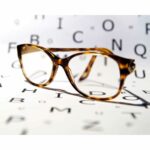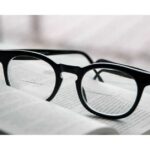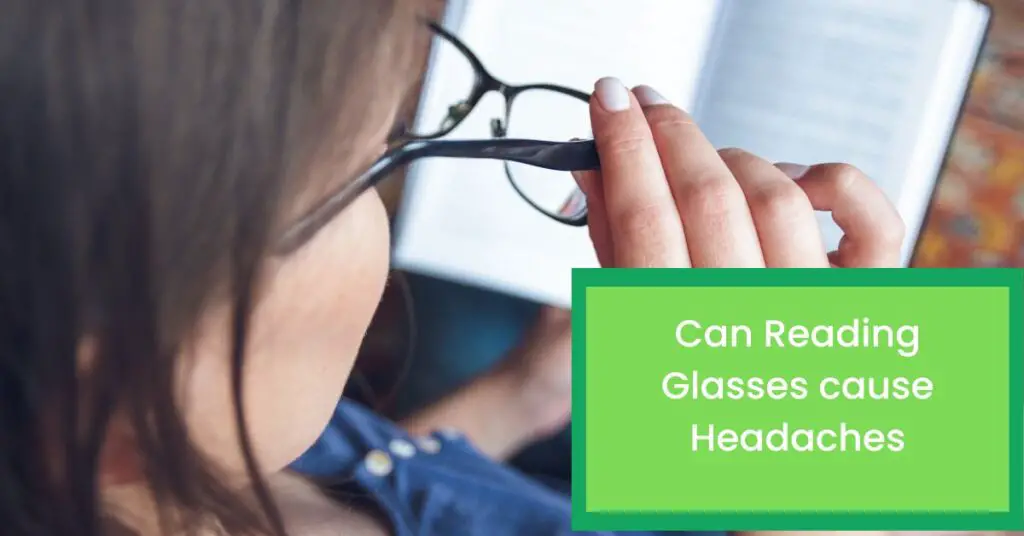Many people are confused about whether distance glasses can be used for reading. After all, the lenses are designed to help you focus on faraway objects and not the small type of a book or magazine. But with some creativity and understanding of how vision works, there may be ways to use them for reading if needed. In this article, we’ll explore what types of distance glasses may work best for those who need help with near vision tasks like reading. We’ll also look at other options that might help if your distance glasses aren’t suitable.
No, distance glasses cannot typically be used for reading. The lenses of distance glasses are designed to help you focus on faraway objects, not the small type of a book or magazine.
Additionally, using distance glasses while trying to read can strain your eyes and cause further vision problems. Therefore, it is best not to use them for reading purposes.
While it may be possible to use them for near vision tasks like reading in some instances, the lenses might not be adequate enough to give the sharpness of focus needed for close-range tasks.

What exactly are distance glasses, and how do they work?
Distance glasses are lenses that help you focus on faraway objects. They contain one power strength throughout the lens and when worn, they create an enlarged image of what’s in front of you. This allows you to see clearly at a distance without straining your eyes. Distance glasses can be used for activities such as driving, watching TV or sporting events, but they cannot typically be used for near vision tasks like reading.
There are three types of distance glasses available: single-vision, bifocal and progressive. Single-vision lenses only have one power strength throughout the lens, which is suitable for focusing on distant objects but not ideal for near vision tasks such as reading. Bifocal lenses contain two powers: one at the top of the lens for distance and one at the bottom for near tasks such as reading books or newspapers. Progressive lenses also contain two powers, but they are blended together in a gradient fashion so that the wearer can transition smoothly between distance and near vision tasks.
It is possible to use either bifocal or progressive lenses for reading if needed, as they contain two powers which enable both far and near vision tasks. However, depending on your individual needs it might not be the best option for you. Some people may experience eyestrain when using these types of glasses for close-range tasks such as reading. If this is the case, it is best to consult with an optometrist who can suggest alternative solutions tailored to your specific requirements.
Who needs to wear distance glasses?
Distance glasses are typically worn by people who have difficulty focusing on faraway objects. This can be caused by a number of conditions, including astigmatism or myopia. People who have these conditions and need help with near vision tasks such as reading will usually require bifocal or progressive lenses to give them the sharpness of focus they need.
It is also important to note that people who have normal vision may also need distance glasses for certain activities such as driving or sports. This is because the lenses can help them focus on faraway objects more clearly, which can be beneficial in these situations.

Why distance glasses cannot be used for reading?
As mentioned previously, distance glasses are not suitable for use with near vision tasks such as reading. This is because they contain one power strength throughout the lens and are designed to focus on faraway objects only. Using them for close-range tasks can cause strain on your eyes, leading to further vision problems.
If you have difficulty focusing on faraway objects, it is important to consult with an optometrist who can prescribe you the appropriate type of lenses for your needs. Bifocal or progressive lenses may be a better option than single-vision distance glasses if you need help with reading or other near vision tasks.
In conclusion, although distance glasses cannot typically be used for reading, there may be certain cases where bifocal or progressive lenses could be beneficial. Before making any decisions it is best to consult with an optometrist who can help you choose the right type of glasses for your individual needs.
What is the impact on the eye if someone wears distance glasses for reading?
Wearing distance glasses for near vision tasks such as reading can cause strain on the eyes, leading to further vision problems. This is because these lenses only contain one power strength throughout the lens and are designed to focus on faraway objects only. Reading with these types of glasses could cause eyestrain, which can lead to headaches, fatigue and blurred vision.
It is important that you consult with an optometrist before deciding which type of glasses you need so that you get lenses tailored to your individual requirements. Bifocal or progressive lenses may be a better option than single-vision distance glasses if you need help with other close-range tasks such as reading.
In summary, distance glasses cannot typically be used for reading. Wearing them for near vision tasks can cause strain on the eyes and lead to further vision problems, so it is important to consult with an optometrist to determine which type of lenses are best suited for your individual needs.
Can someone use distance reading glasses on certain occasions?
It is possible to use distance glasses for reading on certain occasions, particularly if you have both presbyopia and myopia. Presbyopia is a condition that affects near vision and typically begins around the age of 40, while myopia affects far away vision. People with both conditions may benefit from using bifocal or progressive lenses, as these contain two power strengths which can be used for different tasks such as close-range reading and distance viewing.
However, it is important to note that wearing distance glasses for reading should not be done on a regular basis as this could cause eyestrain. Therefore, if you have both presbyopia and myopia it is best to consult with an optometrist who can help you choose the right type of glasses for your individual needs. The optometrist can also advise you on how to use the lenses correctly and when it may be better to switch between near vision and distance glasses.
In some cases, it may be possible to use distance reading glasses on certain occasions. For example, if you are participating in an activity such as driving or sports that requires you to focus on far away objects, then using your distance reading glasses could be beneficial.
In conclusion, people who have both presbyopia and myopia may benefit from using bifocal or progressive lenses for reading on certain occasions. However, regular use of distance glasses for near vision tasks should be avoided as this could cause eyestrain. It is important to consult with an optometrist who can help you choose the best type of lenses for your individual needs.
Possible alternatives to using distance glasses for reading
There are a number of possible alternatives to using distance glasses for reading. Non-prescription readers and computer glasses that contain special lenses designed for viewing digital devices may be beneficial for people with presbyopia who require help with near vision tasks. They can also be worn over existing prescription eyeglasses or contact lenses.
Another option is to use bifocal or progressive lenses, which contain two power strengths throughout the lens and can be used for tasks such as close-range reading and far away viewing. However, they should also only be used on certain occasions as regular use could lead to eyestrain.
In conclusion, there are a number of possible alternatives to using distance glasses for reading. These include non-prescription readers, computer glasses and bifocal or progressive lenses. It is important to consult with an optometrist before deciding which type of glasses are best suited for your individual needs. The optometrist can also advise you on how to use the lenses correctly and when it may be better to switch between different types of glasses.
Conclusion
In summary, distance glasses cannot typically be used for reading. Wearing them for near vision tasks can cause strain on the eyes and lead to further vision problems, so it is important to consult with an optometrist to determine which type of lenses are best suited for your individual needs. It may be possible to use distance reading glasses on certain occasions if you have both presbyopia and myopia, but regular use should be avoided as this could cause eyestrain. There are a number of alternatives available, including non-prescription readers, computer glasses and bifocal or progressive lenses. Consulting with an optometrist can help you choose the right type of lens for your individual needs and advise on how to use them correctly.











